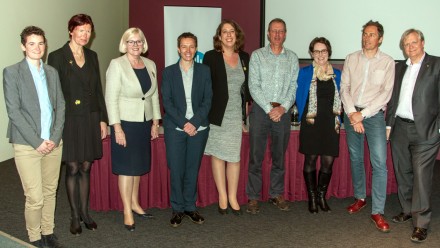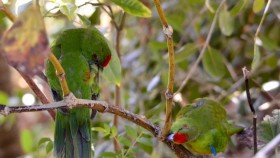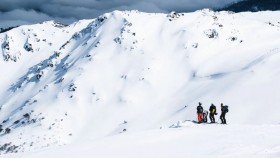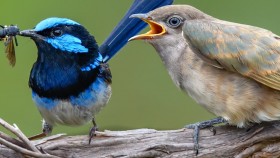Improving gender balance in science: the time to act is now. And everyone has a role to play.
Gender balance in science has been a widely-discussed topic this National Science Week. In Canberra, two main events have focused on this issue: an exhibition, the League of Remarkable Women in Australian Science, sharing portraits and stories of 40 female scientists and a public discussion forum, held at the CSIRO Discovery Theatre on the 19 August.
This forum, named “Women in Science: challenges and solutions” was chaired by Prof Brian Schmidt, Physics Nobel Prize laureate and ANU’s next Vice-Chancellor, and the Hon. Karen Andrews MP, Parliamentary Secretary to the Minister for Industry and Science. Panellists, working in different areas of Science, Technology, Engineering and Maths (STEM), shared their vision of what it means to be a woman in science in 2015.
Dr Sophie Lewis, a climate scientist working at the Australian National University, explained that she had wanted to become a scientist since she was 4 years old. “I am now a scientist and it’s a very rewarding experience for me”. But she also often feels like she doesn’t belong to her workplace, because of a culture of widespread sexist jokes and inappropriate behaviours. And she is not the only one. A recent survey showed that up to 90% of female scientists have faced discrimination based on their gender.
Another panellist, Dr Megan Hemming from CSIRO, agreed and explained that, working as a scientist for 15 years, she has seen too many women leave research. These women didn’t leave because they weren’t good enough or because they didn’t love science any more. They left, Dr Hemming told the panel, because they couldn’t find a way to make their career sustainable. Prof John Evans, from ANU Research School of Biology, added gender bias in science has been known for the last 25 years but still hasn’t been addressed. “We cannot wait fifty years to fix this problem”, said Prof Evans.
All panellists agreed that science must evolve and it will take time. But panellists also agreed that some practical policies can be easily put in place. Prof Elanor Huntington, Dean of the ANU’s College of Engineering and Computer Science, detailed initiatives taken on American university campuses, where mentorship programs, and prestigious grants are successfully addressing gender balance issues. Prof Huntington added that this wasn’t “rocket science but simply a matter of making sure we recruit and keep female scientists at every step of the way”.
Answering a question from Kate Driver, deputy director of Questacon, Mrs Andrews told the audience that, to solve gender balance issues, women would need to be pulled to top positions instead of being pushed. She stressed that benefits of having more women in leading positions needed to be clearly defined and explained. Prof Huntington added that “we need to broaden our horizons, to seek out people who would not otherwise think about joining the fabulous community that science is”.
Panellists believe that change can happen, that science can foster a culture that includes everyone, a culture that makes people feel welcome in the workplace. Dr Hemming explained that providing an environment where people can thrive and lead productive careers would benefit everyone in the community. Mrs Andrews told the crowd that change needed to start now and that everyone had a role to play, a chance to lead and make a difference. And Dr Lewis added, citing Marissa Mayer: “if [we] push through this feeling of being scared, this feeling of taking risks, really amazing things can happen”.
Leaving the CSIRO Discovery that night, ANU student Hannah Osborn said that she felt “very inspired by the fabulous women in science and the passion in Canberra for science”, while Angie Good, from Questacon said that she would continue this thought-provoking and energising discussion with her colleagues, to start making things change.
The League of Remarkable Women in Australian Science exhibition runs until 7 September, at the CSIRO Gallery Room and is sponsored by the ANU Gender Institute, National Science Week – Inspiring Australia Program.












